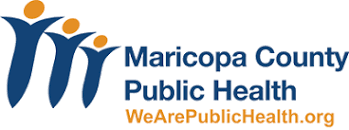- How Arizona senior living facilities could better protect residents
- Arizonans in senior living facilities face violence from other residents
- Arizona senior living facilities are understaffed, endangering workers
- Arizona GOP lawmakers will examine the state’s COVID-19 response
- Probe to analyze Arizona’s COVID-19 response will ignore the dead
- Scottsdale lawmaker’s state-of-emergency ballot proposal hits late roadblock
Legislative Update: May 8, 2023
The House and Senate came in for some brief business on Wednesday, May 3 and then adjourned again until tomorrow. The House now has its full contingent of members, while the Senate is still down one member until the MC Coard of Supervisors names a replacement for Sen. Teran.
Floor votes have been scheduled in both the House and Senate for Monday and I expect that to continue throughout the week. So far none of the bills that we’ve taken positions on are up for votes next week – but that could change quickly.
There are rumors of a budget deal between the Governor and House & Senate leadership – but word is that the Appropriations chairs haven’t been involved – which is unusual.
Two good things happened last week. Both chambers passed a bill to give AHCCCS expenditure authority to draw down federal dollars. The Governor signed it quickly.
Without that authority, AHCCCS wouldnt have been able to make May payments to their contracted health plans, which could have delayed payment to providers.
In another development, we avoided a potential trainwreck in Arizona’s emergency management system last Wednesday. HCR2039 governor; state of emergency, which would have dismantled the Recovery phase of emergencies in Arizona (had the voters approved it) was derailed.
Last-minute questions by Senator Bennett in last Wednesday’s (R) caucus meeting about that ballot referral got the attention of other Republican members. It appeared after the Caucus meeting that the Resolution won’t be going to the Senate floor after all.
Ballot Referral Could Dismantle Arizona’s Emergency Management System
If voters ended up approving it, it would have ended Governor-proclaimed states of emergency after 30 days (including public health emergencies) unless extended by the Legislature in 30-day increments. It would impact all declared emergencies like floods, fires, chemical spills, and other kinds of disasters – not just public health emergencies.
Had it not been stopped last week it would have gone directly to the ballot in November 2024 (Governor Hobbs is unable to veto ballot referrals).
See our Legislative Session Working Powerpoint with the bills we’ve taken positions on.
U.S. Department of Education College Scorecard
The Education Department unveiled changes Tuesday to its College Scorecard which now includes data about what college graduates make four years after completing their degrees and student debt trends. The Department of Education Scorecard is designed to help prospective students “find high-value postsecondary programs” that align with their goals.
The Scorecard was originally developed during the Obama administration as an online tool with data about college costs, acceptance rates, graduation rates and student body diversity. Its original intent was to just prospective students, families, educators, and others information to help them compare colleges.
The new features let students also explore what they might expect as a salary early in their career for all levels of degrees (bachelors, masters, doctorate). Tuition costs and scholarship/grant availability are also indirectly captured as the tool lets students see Folks can also compare median debt and monthly debt payments for various university degrees by school.
I did a quick query for the UA College of Public Health Bachelor’s & Master’s degree programs below. Anyway- I just thought this is an interesting tool for both parents and students to explore as they think about fields of study and colleges.
University of Arizona Bachelor’s Degree in Public Health
MEDIAN EARNINGS 4 YEARS POST GRADUATION: $47,452
MEDIAN DEBT: $21,000
University of Arizona, Master’s Degree in Public Health
MEDIAN EARNINGS 4 YEARS POST GRADUATION: $76,477
MEDIAN DEBT: $47,242
CMS Strengthens Hospital Price Transparency Enforcement
The Centers for Medicare & Medicaid Services today announced changes to its enforcement process for the hospital price transparency rule. CMS said it will now automatically impose a civil monetary penalty if hospitals do not send a corrective action plan on time or do not complete the CAP within 45 days.
American Journal of Public Health: Mpox Vaccine Interest Survey Prioritization and Data Flow: Maricopa County, Arizona, July–August 2022
Abstract: With increasing Mpox cases in Maricopa County, Arizona, the county’s health department launched a survey on July 11, 2022, to gather eligibility and contact data and provide clinic information to those interested in JYNNEOS as postexposure prophylaxis (PEP) or expanded postexposure prophylaxis (PEP++).
Survey data were matched to case and vaccination data. Overall, 343 of the 513 respondents (66.9%) who reported close contact with an mpox case patient received PEP and 1712 of the 3379 respondents (50.7%) who were unsure of their contact status received PEP++. This outreach intervention connected potential close contacts unknown to MCDPH with PEP or PEP++. (Am J Public Health. 2023;113(5):504–508. h
What’s Up with AHCCCS’ Funding Problem: Is it A Crisis?
AHCCCS could soon run out of money and would no longer be able to pay their contracted health plans for the services they’ve been providing to Medicaid members. How is that happening, you ask?
About a month ago HB 2624 was signed into law giving AHCCCS expenditure authority for half of the $3B AHCCCS has already received from the feds this fiscal year.
That money is intended to cover formula adjustments in the capitation rates for the Managed Care Organizations who contract with AHCCCS. The bill was passed with the understanding that the remaining 50% would be approved as part of continuing budget negotiations.
That subsequent approval hasn’t happened yet – hence the anxiety about how AHCCCS is going to be able to pay their bills the rest of this fiscal year. Without the remaining expenditure authority approved by the Legislature, AHCCCS will need to delay the May monthly capitation payments to their contracted Managed Care Organizations.
In the interim, this delay means the Agency and the State are unable to meet those payment obligations, resulting in instability for Arizona’s business community, private partners and any local organizations that rely on funding from the MCOs.
Note: This legislative effort just seeks the authority to spend federal monies (i.e., zero dollars from the state general fund).
Will a fix happen before May comes? We’ll see. Right now, it appears the majority in the legislature is content to let AHCCCS’ contractors provide care ‘on the house’. We should know soon.
Free Support Helps Providers Increase Medication Assisted Treatment Capacity
The Arizona Center for Rural Health is offering free support for experienced (and less experienced) Medication Assisted Treatment (MAT) providers to help them increase capacity to provide MAT services. Participation in the Arizona Center for Rural Health’s AzMAT Mentors Program is free and open to Arizona controlled substance prescribers.
If you’re interested or would like to learn more about our program, please visit their website: https://crh.arizona.edu/mentor
The Tamale Bill is Toast but ADHS Can Still Improve the Cottage Food Program by Being More Generous About What Foods Qualify
With the veto of HB2509 it appears that the cottage food program will stay where it is for at least another year. Unless there’s a Strike All bill that expands cottage foods that satisfactorily address the concerns of the Interim ADHS director and/or the Governor, it appears we’ll be in stasis for the program and the 15,000 persons registered in the Cottage Food program.
In the meantime, is there an administrative fix that could responsibly expand the list of foods that participants can prepare that wouldn’t need a statutory change?
The answer is yes – but it would require ADHS Interim Director Cunico to be more generous with the list of ingredients ADHS considers to be acceptable under the existing program. Here’s how Interim Director Cunico could do that if she were so inclined.
See the list of foods/ingredients ADHS allows in the current program
ADHS adopted the FDA Food Code 2017 to govern food production and sale in Arizona. That document defines potentially hazardous food that:
“… require time/temperature control for safety to limit pathogenic microorganism growth or toxin formation… including an animal food that is raw or heat-treated… that is not modified in a way so that they are unable to support pathogenic microorganism growth or toxin formation…”
Determining which ingredients and foods that meet that definition is both an art and science.
There are certain ingredients – shellfish for example – that are clearly potentially hazardous. Many other meats also potentially hazardous – but others the current ADHS cottage food program considers potentially hazardous should more appropriately be called theoretically hazardous. The bottom line is that the current listing of ingredients the department considers acceptable is unnecessarily restrictive and can be expanded without requiring a statutory change.
My point is that ADHS should collaborate with the University of Arizona Food Product and Safety Lab and others to build a more generous menu of ingredients and combination of ingredients they’ll allow in the existing cottage food program. Such a revised list would be unlikely to include tamales, but many other foods could and should qualify.
Whether ADHS Interim Director Cunico is willing to do so is unknown.
Biden’s Executive Order for Child & Elder Care: What Does it Do?
Last week President Biden signed an executive order directing federal agencies to use their existing statutory authority to make child and elder care cheaper and more accessible. The action doesn’t create new law and doesn’t have an appropriation, but it will eventually change the policies, procedures and leverage federal procurement contracts to make child and elder care more accessible.
If there’s no new law or money, how can the EO change things? Here’s how:
The Order tells federal agencies (e.g., HHS, USDA etc.) to find ways to require applicants seeking federal funds to expand access to childcare. This could be similar to the way the US Commerce Department told companies planning to apply for more than $150 million in CHIPS funding (under the $38B CHIPS and Science Act) that they need to provide a plan to provide childcare to their workers in order to qualify for that funding.
Another example is that the new order tells HHS to use existing authority to reduce childcare costs for families using the Child Care and Development Fund. They’ll likely change their federal regulations (via rulemaking) to reduce or eliminate childcare co-payments in the program. Currently, families contribute on a sliding fee scale (the maximum family copay is 7% of family income) but they can lower that.
Another part of the EO tells the Office of Personnel Management to help federal employees afford childcare. They’re supposed to review current childcare subsidies among federal employees and expand federal employee access to childcare services through federal childcare centers or contracted care providers.
There are limits to what executive orders can do – so this isn’t a watershed action by any means. There’s no guarantee that all these initiatives will actually happen, and the timeline for any of these changes remains uncertain. At least it’s something, though.






